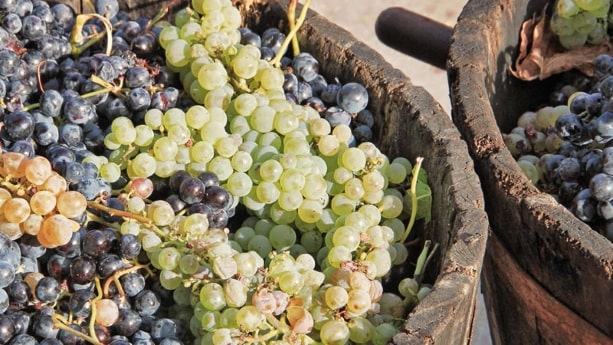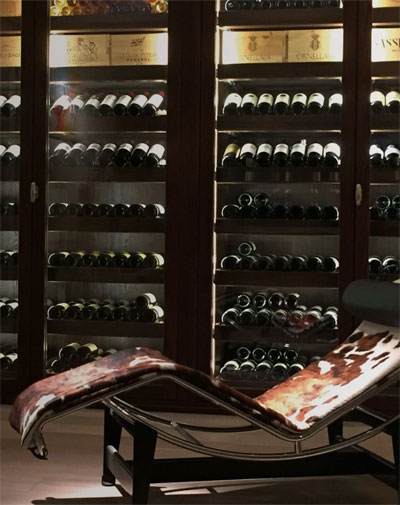
The quintessence of six prestigious Grands Crus villages that embody Maison Henriot is selected to make the blend (Mailly-Champagne, Verzy, Verzenay, Le Mesnil-sur-Oger, Avize and Chouilly) with their most representative parcels for 2006. Beyond the expression of unique vintage, Cuvée Hemera spends at least 12 years ageing in the darkness of the cellars, after a few months ageing in a tank before bottling to reveal its stunning complexity as well as perfect balance.
Tasting Notes: golden yellow in appearance. The bouquet offers a wealth of elegant aromas, featuring notes of white flowers, and linden leaf, and underpinned by a hint of vanilla. Candied fruit notes of apricot at the front of the palate pave the way for a hint of spice. The quintessence of the great terroirs. The magnificent freshness on the palate contrasts with the nose. Precise and mineral, a layer of iodine and saline accents are the characteristic of the most prestigious chalk parcels of the Côte des Blancs. This freshness complements the notes of ripe peach, nectarine and grapefruit. Notes of pastry and spiced fruit impart the lengthy finish. Uniquely irresistible. The low dosage of this cuvee plays its part in retaining and enhancing the natural beauty of the primary fruit.
Food Pairing: An exceptional Champagne with unique ageing potential. To enjoy immediately or to keep for a further 5-10 years in the safety of a dark cellar to allow the Champagne to further flourish over time. For food-wine pairings, dare to enjoy exotic and spicy dishes such as tagines or pad thai, meat in sauces and even game... Some meal suggestions: poultry with morel sauce, tagine with raisins and almonds, lobster with chilli cream, turbot and marinated peppers, scallops with truffle, poultry and corn puree.
Click here for Data Sheet

For orders €100,00 and
above we deliver free to
your place
For orders below €100,00 delivery
charge €10,00 within city limits.
The quintessence of six prestigious Grands Crus villages that embody Maison Henriot is selected to make the blend (Mailly-Champagne, Verzy, Verzenay, Le Mesnil-sur-Oger, Avize and Chouilly) with their most representative parcels for 2006. Beyond the expression of unique vintage, Cuvée Hemera spends at least 12 years ageing in the darkness of the cellars, after a few months ageing in a tank before bottling to reveal its stunning complexity as well as perfect balance.
Tasting Notes: golden yellow in appearance. The bouquet offers a wealth of elegant aromas, featuring notes of white flowers, and linden leaf, and underpinned by a hint of vanilla. Candied fruit notes of apricot at the front of the palate pave the way for a hint of spice. The quintessence of the great terroirs. The magnificent freshness on the palate contrasts with the nose. Precise and mineral, a layer of iodine and saline accents are the characteristic of the most prestigious chalk parcels of the Côte des Blancs. This freshness complements the notes of ripe peach, nectarine and grapefruit. Notes of pastry and spiced fruit impart the lengthy finish. Uniquely irresistible. The low dosage of this cuvee plays its part in retaining and enhancing the natural beauty of the primary fruit.
Food Pairing: An exceptional Champagne with unique ageing potential. To enjoy immediately or to keep for a further 5-10 years in the safety of a dark cellar to allow the Champagne to further flourish over time. For food-wine pairings, dare to enjoy exotic and spicy dishes such as tagines or pad thai, meat in sauces and even game... Some meal suggestions: poultry with morel sauce, tagine with raisins and almonds, lobster with chilli cream, turbot and marinated peppers, scallops with truffle, poultry and corn puree.
Click here for Data Sheet

For orders €100,00 and
above we deliver free to
your place
For orders below €100,00 delivery
charge €10,00 within city limits.


























Whether a private or a professional cellar, we have the know-how and expertise to air condition your dream wine cellar. Motivated by quality and detail, we are proud of our products and the 100% Alsatian design.